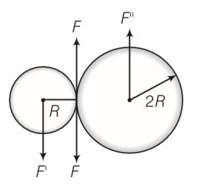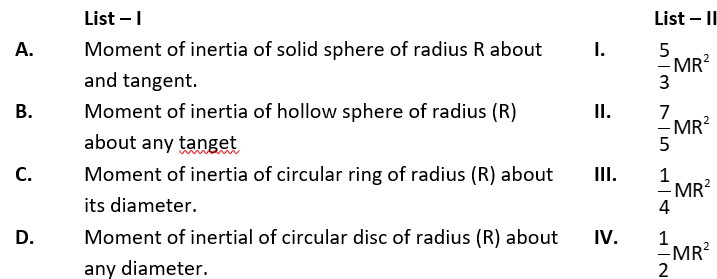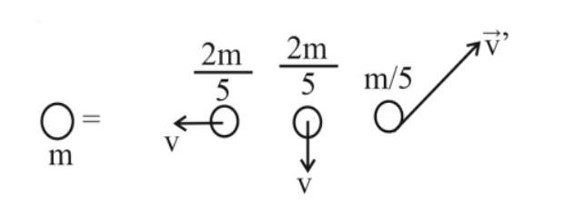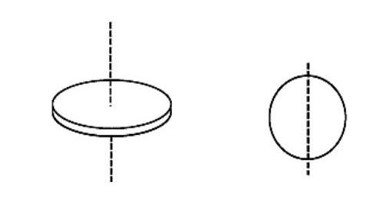Two cylindrical hollow drums of radii R and 2R, and of a common height h, are rotating with angular velocities ω (anti-clockwise) and ω (clockwise), respectively. Their axes, fixed are parallel and in a horizontal plane separated by (3 ) R + δ . They are now brought in contact ( 0) δ → .
(a) Show the frictional forces just after contact.
(b) Identify forces and torques external to the system just after contact.
(c) What would be the ratio of final angular velocities when friction ceases
Two cylindrical hollow drums of radii R and 2R, and of a common height h, are rotating with angular velocities ω (anti-clockwise) and ω (clockwise), respectively. Their axes, fixed are parallel and in a horizontal plane separated by (3 ) R + δ . They are now brought in contact ( 0) δ → .
(a) Show the frictional forces just after contact.
(b) Identify forces and torques external to the system just after contact.
(c) What would be the ratio of final angular velocities when friction ceases
-
1 Answer
-
This is a long answer type question as classified in NCERT Exemplar
(a) Situation as given below

(b) F’ =F=F’’ where F’ and F’’ are external forces through support.
So Fnet=O

External torque = F (anticlockwise)
(c) Let w1 and w2 be the final angular velocities of smaller and bigger drum in both clockwise and anticlockwise . finally there will be no friction
hence Rw1=2Rw2
so
Taking an Exam? Selecting a College?
Get authentic answers from experts, students and alumni that you won't find anywhere else
Sign Up on ShikshaOn Shiksha, get access to
- 65k Colleges
- 1.2k Exams
- 679k Reviews
- 1800k Answers



